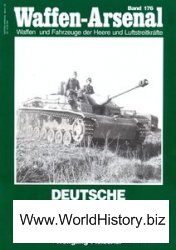The new military technology required longer training and larger armies, which meant
that those fi elding military forces felt it necessary to maintain at least the core of a
standing army from one confl ict to the next. Standing armies were a key factor in the
growth of nation-states, though the fi rst European rulers to build a standing army
were actually the Ottoman sultans. The nucleus of the Ottoman army was the Janissary
Corps – from the Turkish yeni cheri (“new troops”) – a group of professional soldiers
recruited originally from non-Muslim war captives from newly conquered areas, and
later primarily from the sultan’s Christian subjects in Greece and the Balkans. Boys
who became Janissaries were taken away from their families at a young age, raised in
Turkish foster homes, and sent to schools for military and other training. They were
legally slaves of the sultan, but they could gain power and prestige through their service;
the most capable became senior offi cials and ambassadors as well as admirals and
generals. The highest Janissary often held the offi ce of grand vizier, second only to the
sultan. In times of war, the Janissaries were supplemented by paid troops recruited
from throughout the empire; at the time of the Battle of Mohacs, the Ottoman Sultan
Süleyman the Magnifi cent (ruled 1521–66) regularly fi elded an army of 150,000 troops
every year, equipped with huge siege cannons.
By 1500, western European nations also had permanent armies, usually called the
royal army or king’s army, but these were much smaller than those of the sultan; French
and Spanish armies fi ghting each other at about the time of the Battle of Mohacs each
had only about 25,000 men. Armies grew in size throughout the sixteenth century,
however, so that by the end of the century, Spain had about 200,000 soldiers under
arms and other powers in Europe also had large military forces. Some of these were
directly under the control of the state, and others were organized through extensive
networks of private military contractors, who handled their hiring, equipping, and
fi nancing. The combination of new weaponry, new tactics, and much larger armies has
led some historians to see a “military revolution” in early modern Europe, but others
note that such changes took centuries to implement: not exactly a revolutionary pace
of change.
Though sultans and emperors could fi eld an army of such size as easily as kings, this
was beyond the fi nancial reach of most nobles. Extremely wealthy nobles in some areas
did maintain private armies with fi rearms and cannon – Robert Dudley, the earl of
Leicester, in England and the duke of Grandía in Spain could both outfi t hundreds of
cavalry and footsoldiers in the middle of the sixteenth century – but even they could
not support armies that numbered in the thousands. Monarchs attempting to build up
their own power and monopolize legitimized violence passed regulations forbidding
such private forces or ordering their disbanding, but the sheer expense was ultimately
more effective than royal pressure. Those nobles who maintained private armies increasingly
used them for local feuds or banditry, or they hired them out to fi ght for
monarchs, gradually becoming company commanders in royal armies. Positions as offi
cers of infantry companies were also often reserved for nobles, and the more astute of
these learned the new techniques and tactics. The offi cer corps of many early modern
armies was dominated by traditional elites, and military service was expected of nobles
in many areas of Europe. Thus older forms of military organization adapted to the new
realities of warfare.
Monarchs also hired professional military contractors of less exalted backgrounds,
however. By 1450, almost all of those fi ghting, except the highest-ranking nobles, expected
to be paid, either directly by a ruler or by their company’s commander, who in
turn was supposed to receive his company’s pay from the monarch. Footsoldiers were
recruited primarily from among the poorer groups in society with the promise of pay
and bonuses, though military pay was often unreliable and soldiers sometimes went
years without pay. When this happened, soldiers deserted, mutinied, or simply took
what they needed from the surrounding countryside. Looting had long been a standard
part of military life, for taking or destroying the property of one’s enemies was
recognized as an effective means of lessening their ability to continue fi ghting.
Soldiers often brought their wives, girlfriends, or other family members along on
campaigns to pillage for supplies, cook for them, and do their laundry, for armies did
not provide such services; such individuals might well outnumber the actual troops,
and spent much of their time searching the countryside for food and other provisions.
Warfare was thus often accompanied by famine, and by diseases carried by the
armies; such diseases, including typhus, dysentery, and pneumonia, were more deadly
in malnourished populations. It is not surprising that a common subject for artists in
the sixteenth century was the biblical image of the Four Horsemen of the Apocalypse,
riding together: pestilence, war, famine, and death.
Military campaigns had traditionally been fought from March to October when
food was available for men and animals, and the soldiers were simply sent home for
winter. This was no longer advisable with a standing army – going home meant a
high likelihood of desertion – but governments could not afford to build barracks
for the troops. They were thus housed with civilian families, with the family expected
to provide a place for a certain number of soldiers to sleep and keep warm. In
theory the soldiers were supposed to pay for their food, but as their pay itself often
remained theoretical, they simply took what they needed by force. The relationship
between civilians and soldiers was therefore often very hostile, and neither group
had enough to eat. The Spanish army fi ghting in Flanders in the late sixteenth century
was the fi rst to contract directly with local people to feed and clothe the troops;
such improved provisioning lessened mutinies and desertions, and was later copied
by other armies.
Technological and organizational changes altered warfare at sea as well as on land
during this period. War at sea may have as one of its objects the taking or holding of
port cities or other land bases, but it is primarily about lines of communication and
transportation. Such lines are just as important to private traders as they are to governments,
and from the thirteenth to the fi fteenth century most fi ghting at sea was
sponsored by merchants or cities intent on securing or maintaining favorable trade
routes (along with pirates seeking plunder). In the Mediterranean captains used
oared galleys and in the Atlantic sailing ships, but in both cases these vessels were
primarily trading ships, carrying cargo as well as troops. During the fi fteenth century
both types of ships began to carry heavy guns, though these were so expensive
that arsenals increased very slowly. Guns were generally mounted facing forward,
where they could be used both as siege weapons for the bombardment of coastal
cities and to attack and defend merchant fl eets. In the Mediterranean and the Baltic,
specialized gun-carrying galleys were the most important type of warship in the sixteenth
century; at the Battle of Lepanto in 1571 between the Turkish fl eet and a fl eet
of Spanish, Venetian, Genoese, and papal ships, there were more than 200 galleys on
each side. Galleys were not very useful in the stormier Atlantic, however, and here
improvements in ship design, hull construction, and rigging gradually gave sailing
vessels the speed, seaworthiness, and endurance they needed to make them effective
tools of warfare.
As on land, technical and tactical developments in naval warfare were accompanied
by changes in recruitment, training, and organization of both commanders and
crew. In contrast to standing armies, for which there is little use between wars, experienced
seamen have skills that are in great demand wherever there is commercial
shipping. Captains – and crews accustomed to working under them – were to be
found in every seaport in the fi fteenth and sixteenth centuries, familiar with using
violence in defense of trade as well as the many diffi culties of sea travel. In some parts
of Europe, especially the Mediterranean, ship captains included younger sons of noble
or wealthy urban families, but elsewhere they were more likely to be commoners,
as the more technical aspects of shiphandling and gunnery were seen as demeaning.
This social prejudice began to change in the sixteenth century, and slowly a corps of
permanent sea offi cers, including both nobles and commoners, began to develop in
many parts of Europe, with the social positions needed to command crew and the
maritime skills needed to win battles. Skilled crew – gunners, topmen (who climbed
aloft to handle sails and rigging), carpenters, sailmakers – were generally hired from
merchant ships during time of war and might command fairly high wages. Unskilled
men might be paid mercenaries, as soldiers were, but they might also be conscripted
or impressed into service; the Danish and English navies both required seaside communities
to provide and pay for a certain number of seamen during times of war.
In navies with large galley fl eets, such as those of France, Spain, and the Ottoman
Empire, convicts, prisoners of war, and slaves were increasingly used as oarsmen,
chained to their oars.




 World History
World History









